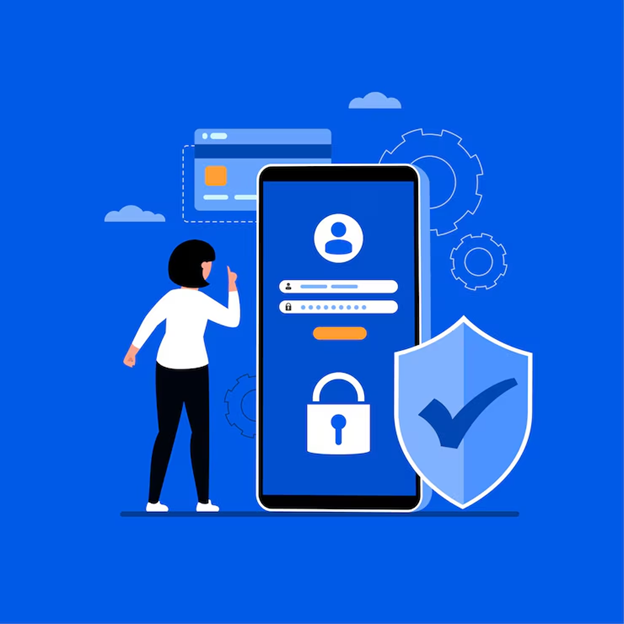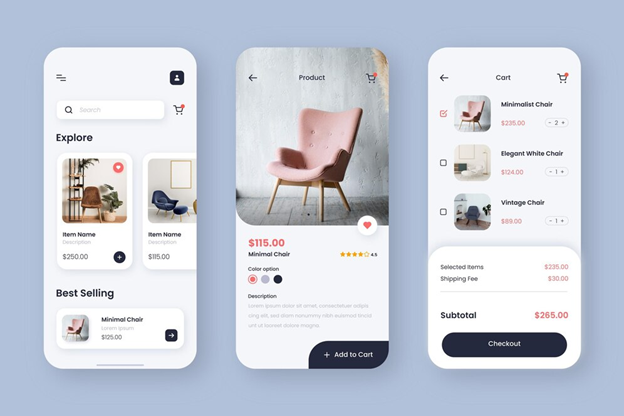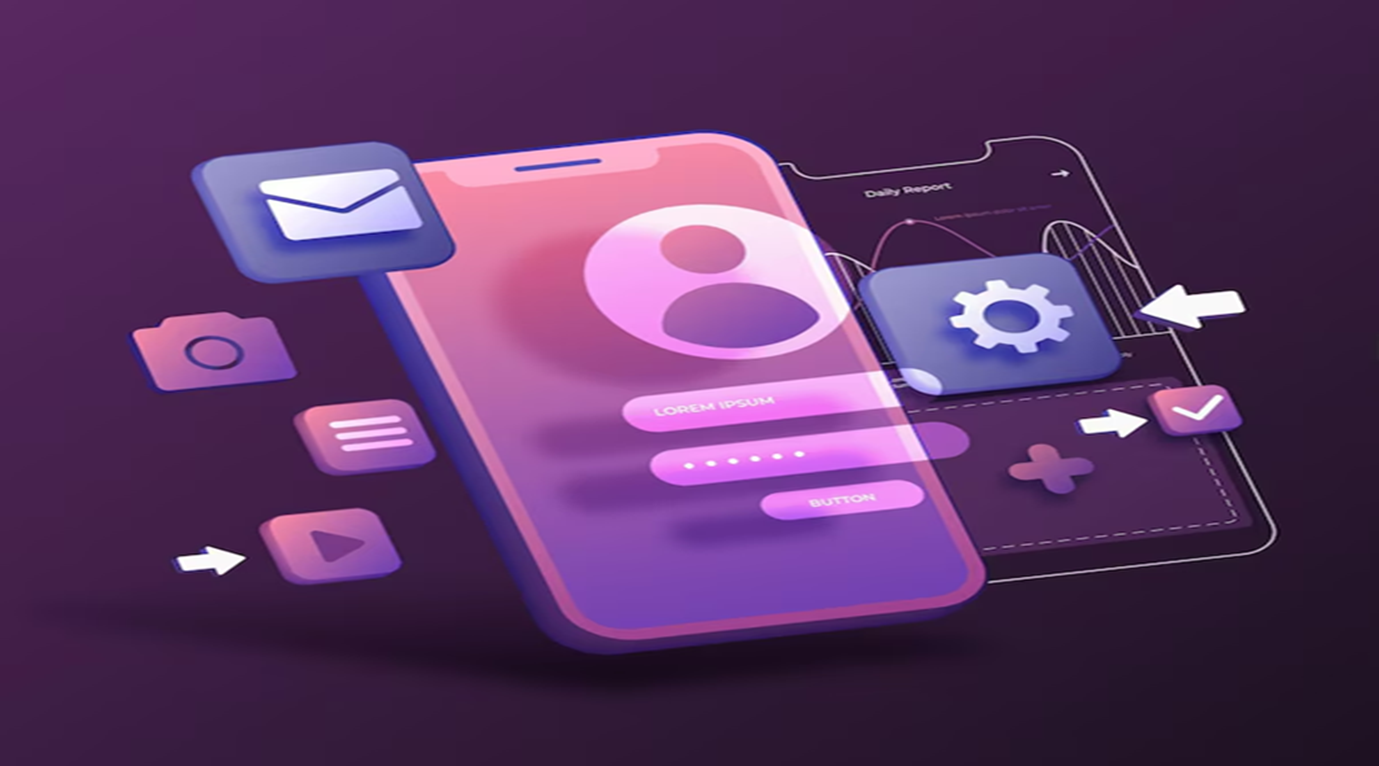The mobile application market has exploded in recent years. A staggering 80% of smartphone users spend their time on mobile apps doing things like streaming content, connecting with friends on social media, shopping, managing their finances, and enhancing productivity.
However, with millions of apps vying for user attention, standing out from the crowd can be a challenge. The key to success lies in incorporating the essential mobile app features that not only fulfill user needs but also provide an exceptional user experience.
This blog post serves as a comprehensive guide for app developers, tech entrepreneurs, and digital marketing professionals alike, exploring the fundamental features that define a thriving mobile app. Read on.
The Cornerstone of User Engagement: User-Friendly Interfaces
Imagine navigating a maze with no discernible path. This is akin to a mobile app with a confusing and unintuitive user interface (UI). A well-designed UI acts as the cornerstone of any successful mobile app. It’s the bridge between your app’s functionalities and your users, and it plays a critical role in determining whether they become loyal users or frustrated uninstallers.
Studies by Nielsen Norman Group, a usability research firm, have found that a positive first impression of a website (and by extension, a mobile app) can be formed within a mere 50 milliseconds, largely based on visual design.
Here’s what makes a winning UI:
- Intuitive Navigation: Prioritize clear and intuitive navigation. Imagine a user trying to order food on a restaurant app. If they can’t find the menu or encounter a convoluted checkout process, they’re likely to abandon the app in frustration. Strive for a logical flow that guides users towards their goals without any unnecessary hurdles. Employ clear and concise labels for buttons and menus, and organize functionalities in a way that feels natural and intuitive.
- Visual Appeal: The human brain is wired to respond positively to visual stimuli. An aesthetically pleasing UI with a consistent design language creates a positive user experience. This doesn’t necessarily mean overwhelming users with flashy graphics or complex animations. Instead, focus on clean layouts, a cohesive color scheme, and fonts that are easy to read on a mobile device. A recent study by Adobe revealed that 66% of consumers trust a mobile app or a website that has a modern and professional design.
- User-Centric Design: Don’t just design an app; design it for your users. Understanding your target audience and their needs is paramount. Conduct user research to identify pain points and tailor the UI to address them. Usability testing with real users will help you identify areas for improvement and ensure a smooth and intuitive user experience.
By prioritizing these UI design principles, you can create an app that is not only functional but also visually appealing and engaging. This will keep users coming back for more and leave a lasting positive impression.
Speed Matters: Enhancing App Performance and Loading Times
In today’s fast-paced world, patience is a rare commodity. When it comes to mobile apps, users expect lightning-fast loading times and seamless performance. A study by Apptimize, a mobile app performance optimization company, revealed that a one-second delay in page load time can lead to a 7% conversion rate drop. This translates to lost users and missed opportunities for your mobile app.
Here’s why optimizing app performance and minimizing loading times are crucial:
- Impact on User Satisfaction: Imagine waiting for an app to load, only to be met with a spinning wheel of death. Frustrating, right? Slow loading times can lead to user dissatisfaction and app abandonment. Users expect apps to be responsive and perform smoothly, and anything less can create a negative user experience.
- Retention Rates and Revenue: There’s a direct correlation between app performance and user retention rates. If your app is slow and clunky, users are less likely to return and engage with it on a regular basis. This can ultimately impact your app’s revenue potential, especially for apps that rely on in-app purchases or advertising.
Here are some actionable insights to achieve optimal app performance:
- Code Optimization: Streamline your app’s code by removing unnecessary elements and employing efficient coding practices. Large, unoptimized code files can significantly slow downloading times. There are various code analysis tools available that can help you identify areas for improvement.
- Image Compression: Images are often the largest files within an app, and large image sizes can significantly impact loading times. Utilize image compression techniques to reduce file sizes without sacrificing image quality. There are various online tools and libraries available to assist with image compression.
- Leveraging Caching: Implement a robust caching strategy to store frequently accessed data locally on the user’s device. This ensures that users can access this data even when offline and reduces the need to download the same information repeatedly. For instance, a social media app could cache a user’s feed and profile information, allowing them to browse their content offline.
- Performance Monitoring Tools: Continuously monitor your app’s performance to identify and address any bottlenecks that might be slowing down your app. There are various app performance monitoring tools available that can help you diagnose and fix performance issues.
Your Mobile App Keeps Your Business Running 24x7
Speed-up load times and boost performance to keep users engaged.
Optimize your App Now
Personalization: The Key to User Retention
The one-size-fits-all approach just doesn’t cut it anymore in the competitive world of mobile apps. Today’s users crave personalized experiences that cater to their individual needs and preferences. This is where personalization comes into play.
Personalization in mobile apps involves tailoring the user experience to each individual user. This can be achieved through various techniques, such as:
- Leveraging User Data: By collecting and analyzing user data (with user consent, of course), you can gain valuable insights into user behavior, preferences, and interests. This data can then be used to personalize the app experience, such as recommending products based on a user’s purchase history, suggesting articles based on their reading interests, or curating playlists based on their music preferences.
- Geolocation Services: With user permission, integrate geolocation services to personalize the app experience based on the user’s location. For instance, a food delivery app could recommend restaurants near the user’s current location, or a ride-hailing app could automatically set the pickup location based on the user’s GPS coordinates.
Benefits of Personalization:
- Enhanced User Engagement: When users feel like an app understands their needs and preferences, they’re more likely to be engaged and interact with the app on a regular basis. Personalized recommendations, content suggestions, and tailored experiences can keep users coming back for more.
- Increased User Satisfaction: Personalization demonstrates that you value your users and their individual needs. This can lead to higher user satisfaction and a more positive overall user experience.
- Improved Conversion Rates: By understanding user behavior and preferences, you can deliver targeted marketing messages and promotions that are more likely to resonate with each user. This can lead to improved conversion rates, whether your goal is to drive in-app purchases, sign-ups, or any other desired user action.
Ethical Considerations of Personalization:
- Transparency and User Consent: Always be transparent about how you collect and use user data. Ensure you obtain explicit user consent before collecting any personal information, and provide users with the ability to control their data privacy settings within the app.
- Avoiding the Creepy Factor: There’s a fine line between personalization and intrusiveness. Don’t bombard users with irrelevant recommendations or promotions. Strive to personalize the app experience in a way that feels helpful and informative, not creepy or stalkerish.
Building Trust: Robust Security Measures

In today’s digital age, where data breaches and cyberattacks are a constant threat, security is paramount for any mobile app. Users entrust their personal information and potentially even financial details to the apps they use. Building trust with your users requires prioritizing robust security measures that safeguard their data and ensure a safe and secure user experience.
Here’s why prioritizing mobile app security is essential:
- Data Security Concerns: A recent report by IBM revealed that the average cost of a data breach in 2023 reached a staggering $4.35 million. This highlights the financial repercussions of failing to adequately protect user data. Mobile apps that collect sensitive user information, such as credit card details or login credentials, need to implement robust security measures to prevent unauthorized access and data breaches.
- Impact on User Trust: If users perceive your app to be insecure, they’re unlikely to share their personal information or engage with the app on a deeper level. Breaches of user data can lead to a significant loss of trust and damage your app’s reputation.
Here are some essential security features to consider integrating into your mobile app:
- Secure User Authentication: Provide users with multiple secure ways to log in to your app, such as email/password login with two-factor authentication (2FA), social media login (with user consent), or biometric authentication (e.g., fingerprint or face ID). 2FA adds an extra layer of security by requiring a secondary verification code upon login attempts.
- Data Encryption: All sensitive user data, both at rest and in transit, should be encrypted using industry-standard encryption algorithms. This renders the data unreadable in the event of a breach, minimizing the risk of compromising user information.
- Regular Security Audits: Conducting regular security audits of your app by qualified professionals is crucial for identifying and addressing vulnerabilities. These audits can help you stay ahead of evolving security threats and ensure your app remains secure.
Case Studies in Successful App Security:
- Banking Apps: Leading banking apps utilize a combination of secure login protocols, data encryption, and real-time fraud detection to safeguard user data and financial transactions.
- Healthcare Apps: Healthcare apps that handle sensitive medical information, prioritize robust security measures to comply with regulations like HIPAA (Health Insurance Portability and Accountability Act). These apps often employ multi-factor authentication and stringent access controls to protect patient data.
Staying Ahead with Innovation: AI Integration and Other Functionalities
The mobile app landscape is constantly evolving, and innovation plays a pivotal role in keeping your app at the forefront. While core functionalities are essential, integrating cutting-edge technologies like Artificial Intelligence (AI) can propel your app to new heights and provide users with unparalleled experiences.
Here’s how AI is revolutionizing mobile apps:
- Enhanced Personalization: AI algorithms can analyze vast amounts of user data to understand user behavior patterns and preferences with remarkable accuracy. This allows for hyper-personalization of the app experience, delivering content recommendations, product suggestions, and tailored features that are highly relevant to each individual user. For instance, a news app powered by AI can curate a personalized news feed based on a user’s reading history and interests.
- Improved User Interactions: AI-powered chatbots can provide users with instant and efficient customer support. These chatbots can answer user queries, troubleshoot problems, and even complete simple tasks, all within the app itself. This frees up human customer support representatives to handle more complex issues while providing users with a seamless and convenient support experience.
- Voice Search and Recognition: AI-powered voice search and recognition functionalities allow users to interact with apps in a more natural and intuitive way. Imagine searching for a product on a shopping app or controlling music playback on a music streaming app simply by using your voice. This hands-free interaction enhances accessibility and creates a more user-friendly experience.
Beyond AI: Other Innovative App Features
- Augmented Reality (AR): AR overlays digital elements onto the real world through a smartphone camera. This technology has the potential to revolutionize various industries. Imagine virtually trying on clothes before purchasing them in a retail app, or viewing 3D models of furniture to see how they would look in your home. AR can create interactive and immersive user experiences that go beyond the limitations of a traditional mobile screen.
- Virtual Reality (VR): While VR requires a dedicated headset, it offers the potential for truly immersive experiences within mobile apps. Imagine attending a virtual concert or exploring a historical landmark, all from the comfort of your couch. VR can be particularly transformative in the gaming and entertainment industries.
The Future of Mobile App Development
The future of mobile app development is brimming with exciting possibilities. As AI and other innovative technologies continue to advance, we can expect to see even more sophisticated and user-centric mobile apps emerge. The key lies in staying informed about these advancements and integrating them strategically into your app to provide users with unparalleled value and a truly unique app experience.
Prioritizing Features Based on Audience and Objectives

The world of mobile apps boasts an endless array of features and functionalities. However, with limited resources and development time, it’s crucial to prioritize strategically. Not every app needs every feature, and blindly cramming in every bell and whistle can lead to a cluttered and overwhelming user experience.
Here’s how to make informed decisions about which features to prioritize for your mobile app:
- Understanding Your Target Audience: Who are you building this app for? What are their needs, pain points, and expectations? Conduct thorough user research to gain a deep understanding of your target audience. By prioritizing features that address their specific needs, you can ensure your app delivers genuine value to its users.
- Aligning with App Objectives: What are your goals for this app? Do you aim to educate, entertain, drive sales, or foster social connections? Clearly define your app’s objectives and ensure the features you prioritize contribute to achieving those goals.
Feature Prioritization Frameworks and Tools:
- The MoSCoW Method: This prioritization framework categorizes features into Must-Have (core functionalities essential for the app to function), Should-Have (important features that enhance the user experience), Could-Have (desirable features that can be added later), and Won’t-Have (features outside the app’s scope).
- User Feedback and Analytics: Pay close attention to user feedback and app analytics data. This data can reveal which features users are engaging with most and identify areas for improvement. By prioritizing features that resonate with your user base, you can ensure your app remains relevant and valuable.
Conclusion
In the ever-evolving landscape of mobile app development, staying ahead of the curve is paramount. By prioritizing user-friendly interfaces, optimizing app performance, embracing personalization, ensuring robust security measures, and integrating innovative technologies like AI, developers can craft mobile experiences that captivate users and drive business success.
As you embark on your app development journey, remember that success often lies in collaboration with the right partners. Neuronimbus offers unparalleled expertise in app development, ensuring your app stands out in a crowded market. With Neuronimbus by your side, your mobile app aspirations can become a reality. Let’s innovate together!




